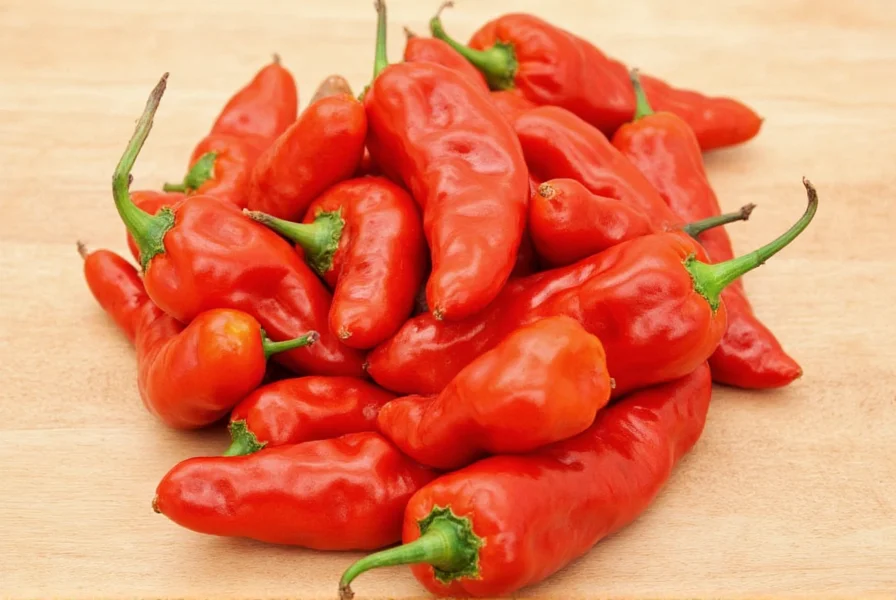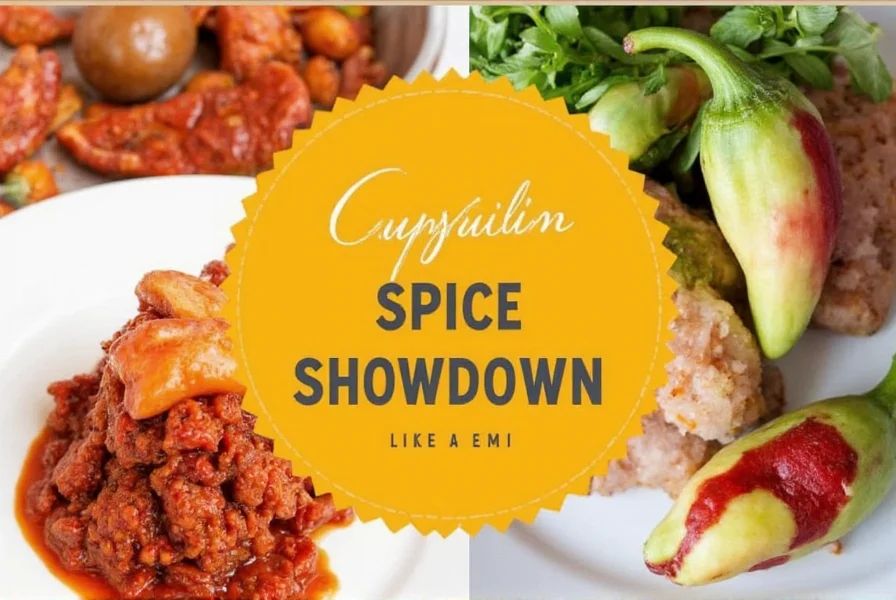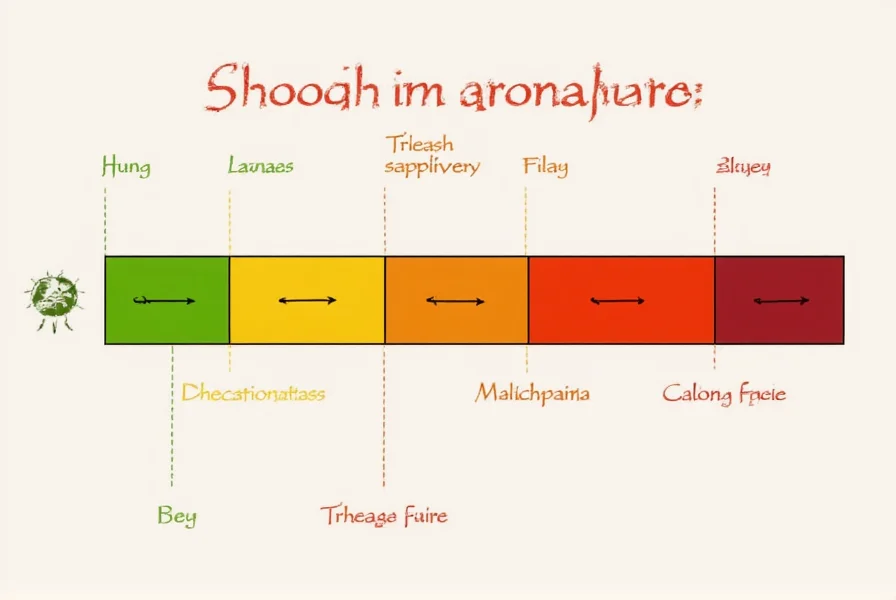So you've bitten into a jalapeño and thought, "Wait... is this hot or am I just sweating because of my nerves?" Welcome to the world of the Scoville Scale, where heat meets science, and every chili pepper has its own story to tell.
The Scoville Scale measures the heat level of chili peppers in Scoville Heat Units (SHU), from bell peppers at 0 SHU to the Carolina Reaper exceeding 2 million SHU. Whether you're planning a backyard cookout or trying a fiery curry, understanding this scale ensures you choose the perfect spice level for your taste.
In this guide, we'll break down everything you need to know about the Scoville Scale, including pepper comparisons, how capsaicin affects your body, safety tips, and expert recommendations for handling spicy foods.
Table of Contents
- What Exactly Is Capsaicin?
- The Scoville Scale Explained
- Pepper Heat Comparison Chart
- The Effects of Capsaicin on Your Body
- Buying Guide: Choosing the Right Spice Level
- Top 5 Tips for Handling Hot Peppers
- Frequently Asked Questions
- Conclusion
What Exactly Is Capsaicin?
Capsaicin is the compound responsible for that burning sensation when you bite into a chili pepper. It's not just a flavor enhancer — it's a chemical defense mechanism that peppers developed to ward off animals (and some overly adventurous humans).

Capsaicin binds to pain receptors in your mouth and skin, tricking them into thinking something is burning. Fun fact: birds don't feel the burn! That's why they can eat super-hot peppers without any discomfort — making them great seed dispersers.
The Scoville Scale Explained
Created by pharmacist Wilbur Scoville in 1912, the Scoville scale measures the pungency (spicy heat) of chili peppers. Originally, it was based on dilution testing — a human taster would keep diluting a pepper extract until the heat was no longer detectable.

Today, scientists use high-performance liquid chromatography (HPLC) to measure capsaicin content more accurately, but the Scoville rating remains the standard used by chefs, spice lovers, and daredevils around the world.
Pepper Heat Comparison Chart
Let's take a visual tour through the spiciest players on the block. Below is a table comparing common peppers across the Scoville Scale.
| Pepper Name | Scoville Heat Units (SHU) | Typical Use |
|---|---|---|
| Bell Pepper | 0 SHU | Sweet crunch in salads or stir-fries |
| Jalapeño | 2,500–8,000 SHU | Tacos, nachos, salsas |
| Hatch Green Chile | 1,000–8,000 SHU | Ranchero sauces, roasts |
| Habanero | 100,000–350,000 SHU | Salsas, marinades, hot sauces |
| Ghost Pepper (Bhut Jolokia) | 850,000–1,041,427 SHU | Extreme heat dishes, chili challenges |
| Carolina Reaper | 1,400,000–2,200,000 SHU | World record holder – handle with care! |
The Effects of Capsaicin on Your Body
Ever wonder why eating spicy food makes your nose run and your eyes water? Here's what happens when capsaicin hits your system:
- Mouth: Binds to TRPV1 receptors, signaling pain and heat
- Nose: Triggers nasal mucus production
- Stomach: Can cause digestive irritation if you're sensitive
- Endorphins: Spicy food releases endorphins — giving you a natural high
Pro tip: Milk, yogurt, or ice cream are your best friends when things get too hot. Water won't help — capsaicin isn't water-soluble!
Buying Guide: Choosing the Right Spice Level
When you're shopping for chilies, hot sauces, or spices, here's how to decode labels and pick the perfect level of heat:
Understanding Product Labels
- SHU Rating: Always look for the Scoville Heat Unit listed. This tells you exactly how spicy the item is.
- "Mild," "Medium," "Hot": These terms are often vague. When in doubt, ask for specifics.
- Ingredients: Some sauces blend multiple peppers for layered heat. Know which ones dominate.
Top Products for Every Heat Level
Here are a few popular products rated by their position on the Scoville Scale:
| Product Name | SHU | Best For | Use Case |
|---|---|---|---|
| Cholula Original | ~7,000 SHU | Moderate spice lovers | Everyday cooking, tacos, eggs |
| Tabasco Original Red | ~2,500–5,000 SHU | Beginners & casual users | Dash seasoning for soups and sauces |
| Trinidad Moruga Scorpion Sauce | 1.2 million+ SHU | Experienced heat seekers | Challenge recipes, DIY sauces |
| Blair's 16 Million Reserve | 16,000,000 SHU (synthetic capsaicin) | Experts only | Used in extreme experiments |
Top 5 Tips for Handling Hot Peppers
- Wear gloves: Capsaicin sticks to skin and can transfer to eyes or other sensitive areas.
- Use plastic cutting boards: Wood absorbs oils, making cleanup tricky.
- Avoid touching your face: Seriously, this stuff is strong enough to burn your eyeballs.
- Have dairy nearby: As mentioned earlier, milk or yogurt will neutralize the heat.
- Store fresh chilies properly: Keep them dry and refrigerated in a breathable bag for up to two weeks.
Frequently Asked Questions (FAQ)
What is the Scoville Scale?
The Scoville Scale is the standard measurement for the heat level of chili peppers, expressed in Scoville Heat Units (SHU). It was developed by pharmacist Wilbur Scoville in 1912 and measures capsaicin concentration through dilution testing or modern HPLC methods.
What pepper has the highest rating on the Scoville Scale?
As of current records, the Carolina Reaper holds the Guinness World Record for the hottest pepper, measuring between 1,400,000 and 2,200,000 Scoville Heat Units (SHU). Newer peppers like Pepper X have been claimed to be hotter but lack official verification.
Can you build tolerance to capsaicin over time?
Yes, regular consumption of spicy foods builds tolerance by temporarily desensitizing TRPV1 receptors in your mouth. However, this tolerance diminishes if you stop eating spicy foods for an extended period.
Why doesn't water help when your mouth is burning from spicy food?
Capsaicin is fat-soluble, not water-soluble. Water spreads the compound, worsening the burn. Dairy products like milk or yogurt contain casein, which effectively breaks down capsaicin and provides relief.
How is the Scoville Scale measured today?
Originally measured through human taste testing (Scoville Organoleptic Test), today scientists use high-performance liquid chromatography (HPLC) to precisely measure capsaicinoid content, then convert results to Scoville Heat Units for consistency.
Does cooking affect pepper heat on the Scoville Scale?
Cooking doesn't change the fundamental Scoville rating of the pepper itself, but it can alter perceived heat. Methods that break cell walls may release more capsaicin, while others might allow evaporation. The actual capsaicin content remains relatively stable.
Conclusion
Understanding the Scoville Scale doesn't have to be intimidating. With the right knowledge, tools, and a bit of courage, you can confidently explore the vast world of spicy flavors without ending up gasping for air.
Whether you're a weekend griller, a home cook experimenting with global cuisines, or a serious heat chaser, the Scoville Scale is your guide to mastering spice. So next time you reach for that habanero or ghost pepper, you'll know exactly what you're getting into — and maybe even enjoy the burn!











 浙公网安备
33010002000092号
浙公网安备
33010002000092号 浙B2-20120091-4
浙B2-20120091-4